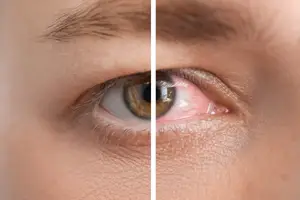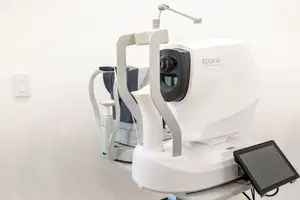A Targeted Approach to Dry Eye Relief in Brentwood, CA
Dry eye can show up as more than just dryness. Blurry vision, stinging, burning, redness, or contact lens discomfort are all common and often misunderstood.

Helping Patients Manage Dry Eye at the Source
We diagnose and treat dry eye at its source. Using advanced imaging and treatment options designed to bring clarity and relief that lasts. We use diagnostic imaging to understand the root cause of your symptoms, then build an eye care plan that addresses the actual source of the problem.
Our goal isn’t just to reduce irritation, but to restore stability to the tear film and surface of your eyes, so you can see more clearly, comfortably, and consistently.
What Causes Dry Eye & How We Identify It
Dry eye is often caused by meibomian gland dysfunction, where the glands in your eyelids stop producing the oil layer that keeps tears from evaporating. It can also stem from inflammation, screen-related blinking changes, contact lens wear, or certain medications.
At Good Eye Optometry, we use meibography and anterior segment imaging to evaluate gland structure and surface inflammation. This gives us a clear picture of what’s happening, so we’re not just treating symptoms, but identifying what’s driving them.


In-mode IPL & RF Treatment for Dry Eye at Good Eye Optometry
For patients with chronic or inflammation-based dry eye, we offer non-invasive treatment using InMode Intense Pulsed Light (IPL) and Radiofrequency (RF). These treatments:
- Target the underlying inflammation around the eyelids
- Improve meibomian gland function
- Reduce redness and surface discomfort
- Stimulate collagen production, which may help support long-term lid health
Treatments are performed in-office and typically recommended in a short series. They can be a strong option for patients who haven’t found relief from drops or heat masks alone.
Other Dry Eye Treatment Options We May Recommend
Depending on your symptoms and diagnostic findings, your plan may also include:
- Medical-grade lubricating eye drops
- Prescription anti-inflammatory eye drops
- Heat therapy or blinking exercises
- Omega-3 supplementation
- Eyelid hygiene guidance or product recommendations
We will guide you through each step and recommend treatments that are necessary and appropriate for your specific case.
